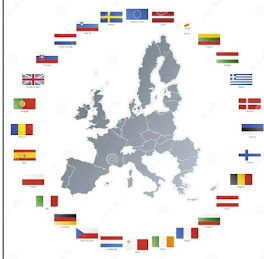European cuisine is a diverse and intricate tapestry of culinary traditions that span the continent's various countries and regions. With a rich history, regional variations, and a blend of cultural influences, European cuisine offers a wide range of flavors, ingredients, and cooking techniques. Here's an overview of some key aspects of European cuisine:
1. **Mediterranean Cuisine:** The Mediterranean region, including countries like Italy, Spain, Greece, and France, is known for its emphasis on fresh and simple ingredients. Olive oil, herbs, tomatoes, and seafood are common components of Mediterranean dishes.
2. **Italian Cuisine:** Italian food is beloved worldwide for its pasta dishes, pizzas, and robust flavors. Pasta varieties, such as spaghetti, lasagna, and ravioli, are often paired with rich sauces and toppings.
3. **French Cuisine:** French culinary tradition is renowned for its emphasis on technique and presentation. Classic French dishes include coq au vin, bouillabaisse, and foie gras. French pastry and baking are also highly regarded.
4. **Spanish Cuisine:** Spanish cuisine features a wide array of tapas (small plates), paella (rice-based dishes), and cured meats like jamón. The use of saffron and paprika contributes to the distinct flavors of Spanish dishes.
5. **Eastern European Cuisine:** Countries like Poland, Hungary, and Russia have their own culinary traditions. Pierogi (dumplings), goulash (stew), and borscht (beet soup) are examples of Eastern European dishes.
6. **British Cuisine:** British food is often associated with hearty and comforting dishes like fish and chips, roast dinners, and pies. The country's diverse cultural influences have led to a blend of traditional and international flavors.
7. **Nordic Cuisine:** Nordic countries like Sweden, Norway, and Denmark emphasize the use of local and seasonal ingredients. Dishes often incorporate seafood, wild game, and foraged ingredients.
8. **German Cuisine:** German cuisine features sausages, sauerkraut, and hearty meat dishes. Pretzels, schnitzel, and traditional pastries like strudel are also iconic.
9. **Portuguese Cuisine:** Portuguese cuisine includes dishes like bacalhau (salted cod), caldo verde (green soup), and pastéis de nata (custard tarts). The country's seafaring history has influenced its focus on seafood.
10. **Culinary Diversity:** Europe's geographical proximity has allowed for culinary cross-pollination. European countries often share ingredients and techniques, leading to a rich diversity of dishes.
11. **Local Ingredients:** Many European cuisines prioritize using locally sourced and seasonal ingredients, resulting in fresh and flavorful dishes.
12. **Cultural Traditions:** European cuisines are often intertwined with cultural traditions and celebrations. Festive foods are a central part of holidays and special occasions.
European cuisine's range of flavors, techniques, and cultural significance make it a fascinating and essential part of global gastronomy. Whether you're indulging in Mediterranean flavors, savoring French elegance, or exploring the comfort foods of Eastern Europe, European cuisine offers a rich and varied culinary journey.








.jpg)
.jpg)









0 Comments